BFBS Preview of 2012 Commonwealth Navies Rugby Cup
Before the Royal Navy squad set off to Australia, BFBS Sport’s reporter Julian Evans visited at their training base. Julian Evans’s report from HMS Sultan featuring the dulcet tones of coach Mike Connolly back in the Senior XV organisation and interviews with Stu McLaren and captain Dave Pascoe. Video clip can be viewed here.
Final Part of the Commonwealth Navies Rugby Cup Trilogy
Brief look at the three matches in 2009 plus a short anecdote from 1997
Back to the Beginning
The Commonwealth Navies Rugby Cup returned to the UK in 2009 as a very different competition from that of 1997. Even though South Africa were forced to withdraw, the competition between the three navies of the UK, Australia and New Zealand had come of age. The teams new enough of each other for there to be off field respect to match on field intensity.
A Brief Review of 1997
Information on the 1997 tournament is unfortunately limited. The scores are given on the Commonwealth Navies Rugby Cup Page and show that the Royal Navy, under captain Bon Armstrong, won the inaugural trophy. The last match of the competition was the clash of the Southern Hemisphere navies with the Lou Smith Cup up for grabs. Both teams wanted to play in their touring strips that were naturally predominately navy blue in colour. After much debate the referee allowed the match to go ahead with what would otherwise have been a colour clash. Perhaps sensing the dilemma the referee was in, neither backrows were as destructive at the breakdown as has subsequently become the norm for Commonwealth Cup encounters. Both sides looked to move the ball at each and every opportunity and the US Portsmouth crowd were entertained to a great match which was eventually won by the New Zealanders 12-10.
Back to 2012 and going in to tomorrow’s match the Royal Australian Navy lead the Royal New Zealand Navy 3-2 in the Commonwealth Cup encounters but New Zealand are the holders of the Shelford-Stokes Shield. A trophy they will be desperately keen to keep for a third year even though the challenge takes place both on Australian turf and during their centenary season.
Commonwealth Navies Rugby Cup 2009 – Brickfields, Plymouth
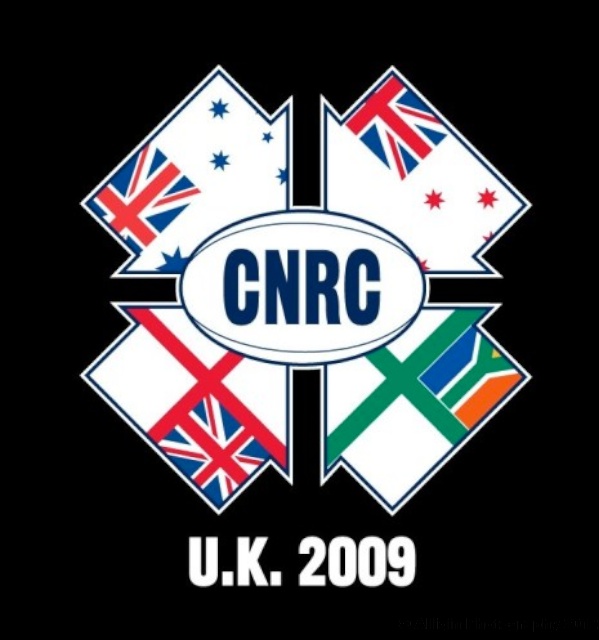
The tournament started with the now customary get together by all the competing teams at Plymouth’s Guildhall.. This occasion in 2009 was special because the teams separated by the Tasman took the opportunity to launch the Shelford-Stokes Shield in the presence of their two famous sons Geoff Stokes of the Royal Australian Navy and Wayne ‘Buck;’ Shelford, formerly PTI of the Royal New Zealand Navy and patron of their Defence Force Rugby.
The Shelford-Stokes Shield is competed for whenever the Royal Australian and Royal New Zealand Navies meet at Senior level. The first ever match was held at the Brickfield ground, Plymouth, United Kingdom, in front of a vociferous crowd approaching a couple of thousand.
The Inaugural Shelford-Stokes Shield – 6th October 2009
A chill damp Tuesday evening at Brickfields was the setting for the first match of the 2009 CNRC and from the outset it seemed that the Royal New Zealand Navy had three years worth of hurt pent up from South Africa where their Tasman rivals prevented them lifting the 2006 CNRC trophy.
The Kiwis built a 10-0 lead in the first quarter through a soft try following a mistake early on by the Breakers and an excellent try which they worked from their own 22m area. Though the Aussies pegged the score back to 10-7 through a cleverly worked try between half back and centre it was to be the last time that they were close. A further try and a penalty from the Kiwis before half time made the score 18-7 at the break.
The Breakers had the worst possible start to the second half conceding an early try, which was converted. From a position of 25-7 down the Breakers new they had to through caution to the wind and their high risk rugby kept them in the contest albeit by their fingertips. However another penalty conceded set them back and even though they scored an intelligent try from a front peel at an attacking lineout the clock was proving to be against them.
The last quarter saw the Kiwis score a further three tries for a 45-12 win. For many the score was slightly flattering as the RAN team were forced to play a loose game in an attempt to retrieve a match that was almost lost after 5o minutes. However for others it was a clinical performance. Their early dominance was set through the physicality and graft of their forwards and when the game did get loose they had the counter attacking skills to capitalise.
With the win the Royal New Zealand Navy became the inaugural winners of the Shelford-Stokes Shield and went some way to compensate for the Breakers win in Simon’s Town.
RNZN Tries were from Marty Fourie, Andy Longley, Hone Taurua, Palu Tonga, Morgan Findlay, Damian Gibbs and Stevie Winikerei. Morgan Findlay also added two conversions and two penalties.
RAN tries were from Dwight Shepherd and Matt Hilyard with a conversion from Dean Brown.
Royal Navy v Royal New Zealand Navy – 9th October 2009
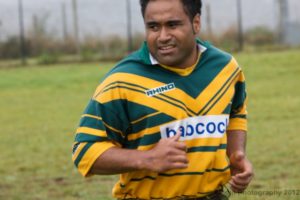
Some rugby is free flowing and entertaining. Some rugby is simply brutal and absorbing. With the CNRC 2009 trophy on the line, with wind and rain and two evenly matched teams determined not to yield an inch; this game was the latter. The Kiwis through captain Hone Taurua and player of the tournament, number 8 Damian Gibbs, took the game to the home side at every opportunity. It was through a try by their skipper, Hone, that they took a deserved 5-0 lead. However the Royal Navy side retained their composure throughout the onslaught and through their own powerful runners of like Gaz Evans and B Buinimasi they were able to set up field position, exert pressure and through skipper Dave Pascoe kick the goals when the New Zealand’s transgressed. Penalty kick by penalty kick they turned the score board over. 3-5, 6-5 and by half time 9-5. With the weather worsening and the Navy’s young play maker, Dom Griffen, off the field there was all to play for in the second half and no one in the two thousand plus crowd was going to be leaving early.
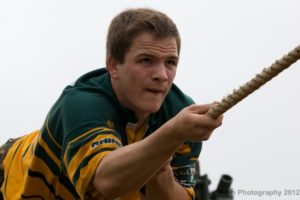
The Kiwis regained the lead through a try by backrow forward Slade Sturmey. However like the first half they couldn’t maintain sufficient pressure on the RN line to extend this slenderest of leads. The match was proving a test of the RN’s resources as Dave Pascoe was also forced from the pitch injured. However his replacement, U23 scrum half Jonny Stephen, was well known to be a live wire of a player and it was through his prompting that the RN team were able to lift the tempo as the game entered its last quarter. With 15 minutes to go Navy Sharks skipper Rob Lloyd spotted a half gap in what had been water tight RNZN defence and ghosted through for the RN’s first and only try of the game. He duly added the conversion to give the home side a 16-10 lead which they were able to hold on to until the final whistle.
RNZN tries from Hone Taurua and Slade Sturmy
RN Try and conversion from Rob Lloyd, three penalties from Dave Pascoe
Royal Navy v Royal Australian Navy – 12th October 2009
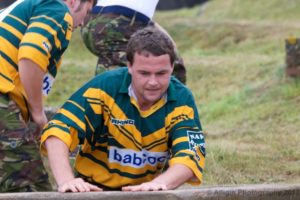
With regular captain Dave Pascoe out of the match injured the honour of leading the RN team fell to U23 captain Wayne John who moved to his secondary position of fly half with Jonny Stephen as his half back partner. Wayne had experienced former Navy flyhalf Rob Lloyd at full back and together the two of them were to orchestrate a half of rugby which was the equal of any played by a Royal Navy team in recent history.
The score book will record the 34-0 lead at the half time break but it does not bare testament to either the manner of the four tries scored nor the other opportunities that were created. The tries were split between the forwards and backs. The first was a cross field kick from Wayne John to Andy Vance, the second a drop off to centre Scott Llewellyn who carved through the space in the defence. The third was from newly converted hooker (from No 8) Gaz Evans and the fourth from young promising lock forward Nial Copeland. Though Rob Lloyd only managed one conversion he had earlier landed three penalties to start the scoring as well as a fourth mid way through the half.
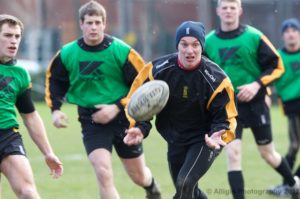

Postscript
Like the preparation afforded the Navy team in 2000, the 2009 squad’s preparation time at Lympstone was to provide a key foundation for Inter Service success. The following images acknowledge some of the backroom team that all successful squads must have to be successful on the field.
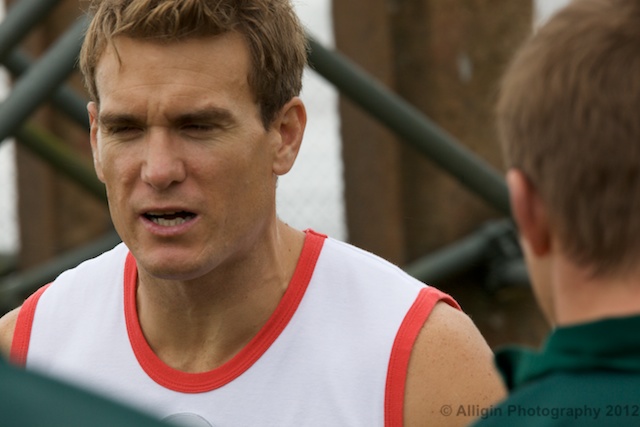
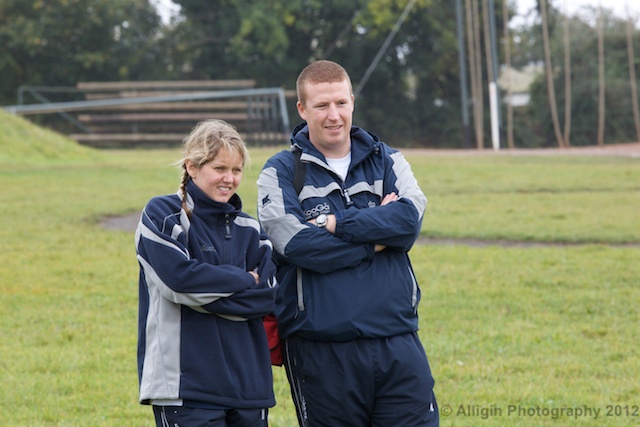
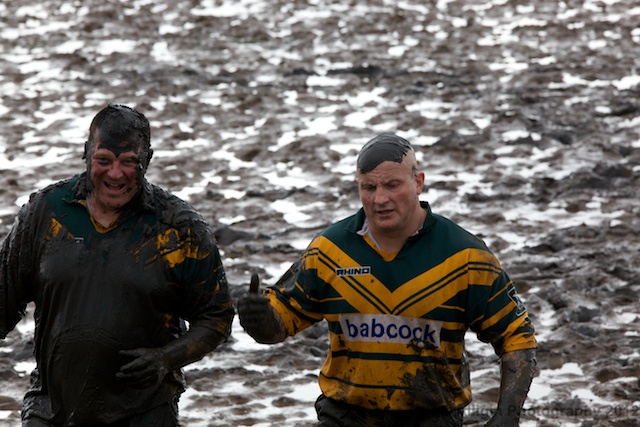

Leave a Reply